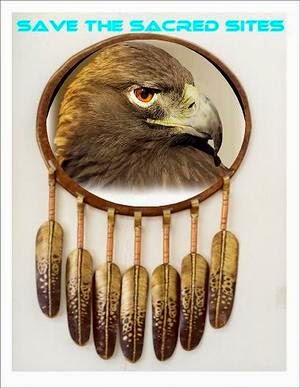Shoshone elder buried in historic Washakie Cemetery - Leland Pubigee fought in the Korean War, taught Soshone at the U.
Kristen Moulton - July 18, 2009
Washakie » Every once in a while, one of the old ones comes back to Washakie in a casket.
On Saturday, it was Leland Pubigee who was buried on the land where he grew up and other Shoshone grew up, a dry, rocky stretch just south of Portage and the Idaho border.
Pubigee, 78, of Box Elder County, died July 11 of leukemia. A veteran of the Korean War, awarded the Purple Heart after being struck in the knee by shrapnel, Pubigee was accorded military honors.
His friend, Rios Pacheco, sang a mournful song in Shoshone at the grave site in Washakie Cemetery, where burial mounds more than 100 years old are covered in weeds, morning glory and wild roses.
The first person buried there was Sagwitch, a leader who had survived the Bear River Massacre in 1863 and eventually led his people, the Northwestern Band of the Shoshone, into the LDS Church.
Gravel covers each grave and many are marked by a simple blank stone.
Bees buzzed and the occasional dove cooed as a bugler from Hill Air Force Base Honor Guard played Taps for Pubigee on Saturday. The bugler's partners folded and handed the flag from Pubigee's casket to his lone survivor, sister Helen Timbimboo.
Pubigee served several times on the tribal council of the Northwestern Band of the Shoshone Nation, and was one of two male elders of the tribe.
He and Timbimboo were among a handful of full-blooded Shoshone left in the tribe, and among the few who still speak the native tongue. They spent a year teaching Shoshone at the Native American Language Institute at the University of Utah.
Forrest Cuch, executive director of the Utah Office of Indian Affairs, called Saturday a sad day. "They have both [Pubigee and Timbimboo] made tremendous contributions," Cuch said after Pubigee's funeral in an LDS Stake Center in Brigham City.
"We are losing our elders," he said. "Young people have got to pay respect to the elders. They are the wisdom keepers. With that goes the old songs, the old stories."
Pubigee, a retired heavy equipment worker and auto body repairman, never married, but was close to his siblings, nieces and nephews. He surrounded himself with animals -- goats, cats, horses -- at his home in the Harper Ward area north of Brigham City.
In 2008, he told The Tribune about the day in the 1960s when he watched the old homes of Washakie burn to the ground.
He was cleaning graves in the cemetery on the hill west of the town, which really was an LDS Church farm created to help the Shoshone learn to farm after their conversion to the faith in the 1880s.
During World War II and in the post-war years, most of the families moved away to work in the defense industry, although many returned often for visits.
The church, believing the homes abandoned, burned them to the ground, angering many Shoshone. In the 1980s, the church helped the tribe acquire the 184 acres at Washakie that helped the tribe gain federal status. The land is mostly barren.
On Saturday, Elva Schramm recalled playing ball and riding horses with Pubigee and the other children of Washakie. Now a resident of Blackfoot, Idaho, she said she, too, would not be buried anywhere else.
"This is our home," she said. "We'll always return, in spirit or not."
http://www.sltrib.com/ci_12868617
-----
Teresa Anahuy
http://groups.yahoo.com/group/FirstPeoplesNews
Subscribe to:
Post Comments (Atom)






No comments:
Post a Comment
Note: Only a member of this blog may post a comment.